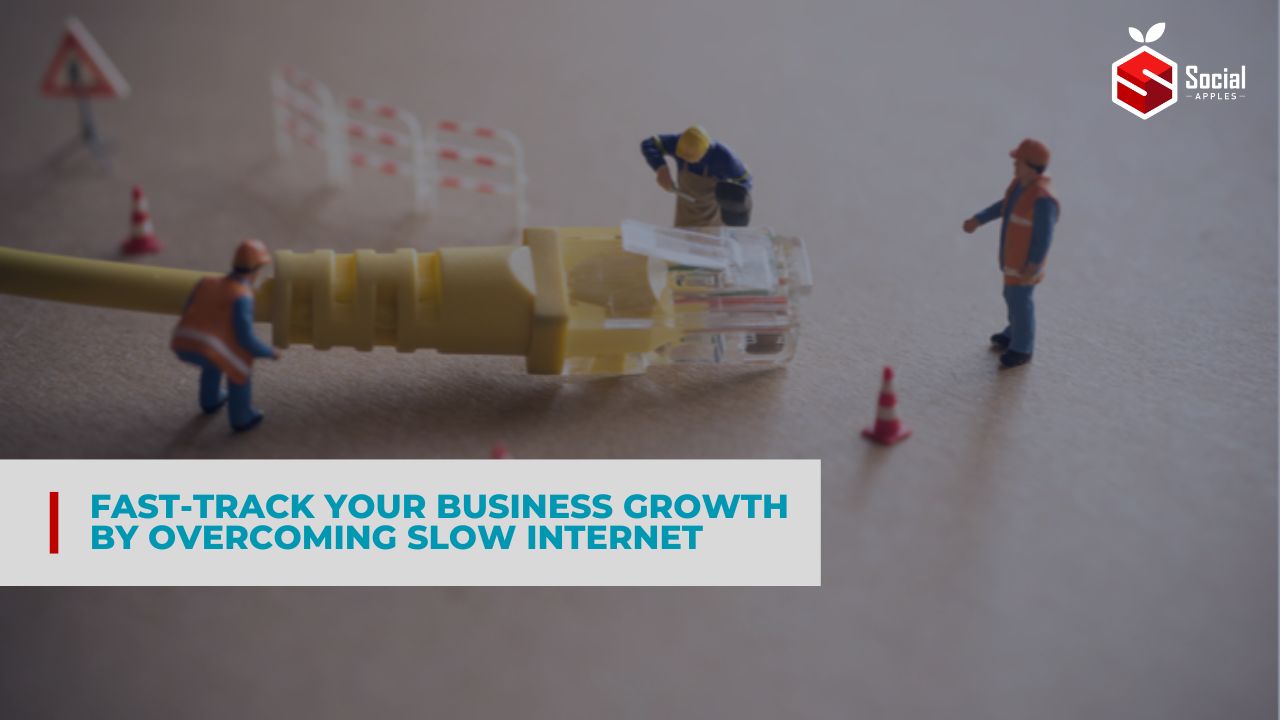A swift and reliable internet connection isn’t just a convenience—it’s a fundamental component for thriving in today’s digital business landscape. This article explores how internet speed influences business operations and presents actionable strategies.
From understanding the roots of sluggish internet connectivity to harnessing the potential of advanced infrastructure and cloud computing for businesses, this in-depth guide equips you with the knowledge to propel your digital transformation and business growth
Moreover, this comprehensive resource spotlights the integration of business telecoms, emphasizing the pivotal role they play in optimizing connectivity. By examining case studies and accessing expert insights, discover how leveraging robust telecom solutions can revolutionize your business’s productivity, efficiency, and overall expansion.

Unlock the secrets to accelerated growth by understanding and implementing the nuances of setting up business telecoms within the broader context of bolstering internet connectivity. Explore how high-speed internet solutions and digital transformation strategies can catalyze your business growth.
Contents
The Impact of Slow Internet on Business Operations
Slow internet connection drastically hampers business productivity, communication, and customer service. Slow internet and IT issues can cause significant losses in efficiency, a crucial aspect of online business operations. This downtime hinders operations, with tasks taking longer than necessary and delaying project completion.
Communication is affected, too, with sluggish email exchanges and disrupted virtual meetings, leading to miscommunications and delayed decision-making. In our fast-paced digital environment, robust internet connectivity is essential for maintaining a competitive edge and ensuring business efficiency.
Identifying the Root Causes of Slow Connectivity
Identifying the root causes for slow internet is critical for businesses striving for efficiency:
- Outdated Hardware: Old routers or modems might not meet current high-speed requirements.
- Inadequate ISP Services: Poor speeds can result from subpar services provided by ISPs.
- Network Congestion: Overcrowded networks, especially in densely populated areas, can cause slower connections.
- Diagnostic Steps: Regularly test internet speed at different times, noting fluctuations. Check hardware specifications against ISP speed offerings. If issues persist, consult your ISP or consider switching providers better suited to your business needs.
Upgrading Your Internet Infrastructure
Upgrading to modern internet infrastructure, particularly fiber-optic connections, is a cornerstone of network optimization for any forward-thinking business. Fiber-optic technology not only offers higher speeds and reliability but also supports wider coverage and better security. Making such advancements is a strategic step towards enhancing your business’s digital operations and reducing downtime.
Choosing The Right Internet Service Provider (ISP)
Choosing the right ISP is essential for businesses to ensure uninterrupted, high-quality service. Speed, reliability, customer support, and cost are important factors. Speed is important for handling daily operations efficiently. Reliability ensures consistent connectivity. Excellent customer support from the ISP can drastically reduce downtime during technical difficulties.
Businesses should look for competitive pricing without having to compromise service quality. Focus on these factors and read customer reviews when researching and comparing different ISPs. The right ISP will meet your current needs while supporting your business’s future growth and digital expansion strategies.
Implementing Best Practices for Optimal Internet Usage
Efficient internet is key to maximising bandwidth and productivity. Businesses can manage their bandwidth better by scheduling heavy data tasks during off-peak hours, avoiding network congestion and ensuring smooth operations during high-demand periods. It is important to use tools to monitor and manage internet usage.
These tools will give insight into data consumption patterns, identify unnecessary bandwidth usage, and allow more informed decision-making regarding internet resources. Implementing these strategies optimizes current internet usage and prepares businesses for growth, ensuring their digital transformation can support expanding needs without compromising performance.
Leveraging Cloud Services for Efficiency
Cloud services are a strategic solution to counteract the limitations of slow local internet. By hosting applications and data on remote servers, cloud computing minimizes the dependency on local network speed, which ensures smoother operations even with bandwidth constraints.
Cloud services allow businesses to adjust resources as per demand, avoiding the need for extensive infrastructure. It also offers remote access, enabling employees to work efficiently from various locations. This enhances operational efficiency and prepares businesses for future technological advancements and evolving work environments.
The Role of IT Support in Maintaining Internet Health
A skilled IT team or support services is needed to maintain optimal internet health. They ensure that the network infrastructure is up-to-date and running efficiently. They can minimize downtime through regular maintenance and timely updates that help to identify and resolve potential issues before they escalate.
An adept IT team can also optimize network settings for peak performance and advise on the latest technological advancements suitable for the business. Their expertise is crucial in safeguarding the network against security threats. Investing in professional IT support is a strategic decision pivotal in sustaining a reliable and secure internet.
Real-World Success: Businesses Overcoming Internet Challenges
Several businesses have transformed their operations by addressing internet connectivity issues. A London-based firm saw a 30% increase in operational efficiency and a 90% reduction in downtime by upgrading to a fiber-optic connection and implementing cloud-based solutions.
A Manchester e-commerce company boosted online sales by 25% after improving website performance with a reliable ISP and hardware upgrade. These cases underscore how strategic changes in Internet infrastructure can lead to tangible improvements in digital business growth and customer satisfaction.
Conclusion
Overcoming slow internet connectivity is about resolving a technical issue and strategically moving towards business growth and sustainability. Identifying and fixing the root causes of slow internet, upgrading to advanced infrastructure, choosing the right ISP, and implementing efficient usage practices let businesses unlock their full potential.
Other key steps in this journey are leveraging cloud services and ensuring robust IT support. With the right approach and investments, businesses can transform their internet challenges into opportunities for enhanced productivity, customer satisfaction, and competitive advantage.
You can visit https://socialapples.com for more information on business growth and internet challenges.













